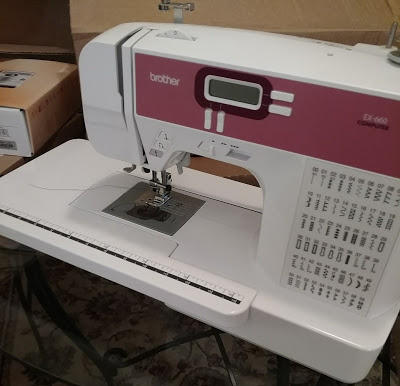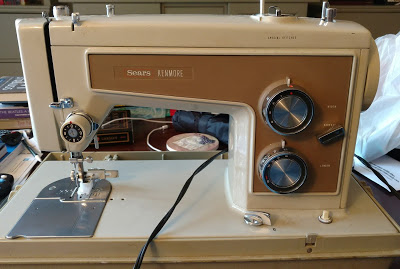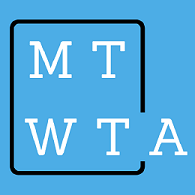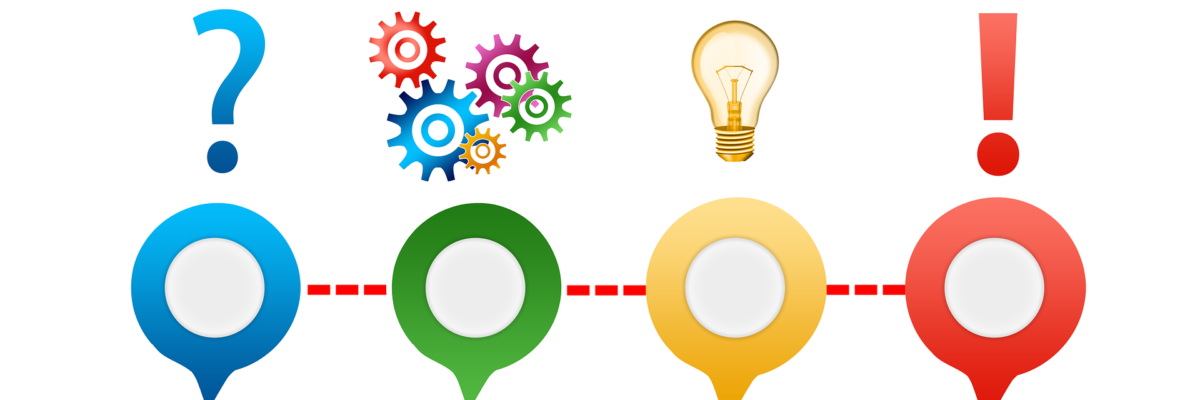I bought two sewing machines yesterday.
The reason for buying one sewing machine has little or nothing to do with my graduate coursework. The reason for buying two explains a great deal about why student ownership of the ePortfolio is so important.
I have worn a particular pant size for the past 20+ years. Recently I’ve discovered that I have…expanded my operations. I’m okay with this on a personal level–my waistline, while larger, is still perfectly healthy. But, while I am healthy, I am also cheap. I don’t want to buy new pants.
My pants from Target and Kohl’s? Not such a big deal. But I have few really nice pairs of pants, and a few suits. I don’t want to shell out for them again. So I took a couple of them to a tailor to have them let out. At roughly $25 per pair of pants, it still costs less than a new wardrobe, but it ain’t cheap. And so I began to wonder if clothing alteration was something I could learn to do. I’ve always been kind of mystified and intrigued by sewing–on the one hand, it’s something I never really learned to do beyond a couple of basic stitches in 7th grade Home Ec. On the other hand, I’m a woodworker, and figuring out how to put things together is familiar territory. This is just using cloth instead of wood.
So, in scouring local thrift stores for suitable elements for this year’s planned Halloween costume*, I also kept an eye out for any lonely, abandoned sewing machines that might be obtained for a small amount of cash. (See paragraph 3 re: I am cheap.) And yesterday, I found one–an almost new machine, with all the fancy digital stitch selection options and accessories (including, importantly, the instruction manual), for around $30. Sold–if I fix 2 pairs of pants, the thing pays for itself, right?

But, like I said, I bought two. Because right next to the almost-new one was a Sears Kenmore model, just like the one my mom had when I was growing up–had to be almost 50 years old. No bells, no whistles, nothing fancy. Just an old, no-frills machine that clearly needed some rehabbing and some understanding of the craft to be made useful again. And it was $4. That’s $4. The woman next to me in the store was holding a Starbucks latte that likely cost more than this machine.

So now, I have one machine that I can use right away (or at least, I can use when I figure out how–did I mention I’ve never used a sewing machine before?), and one that I can use to get more familiar with how these machines actually works, and to gain a better understanding of what I’m doing. Also, it’s built like a tank and will probably still be running long after the plastic-and-circuit-board construction of the newer one inevitably gives out.
I’ve always been this way. The first time I built a guitar, I had a very limited array of woodworking tools at my disposal. I had to get by with the bare minimum and do a lot of things the hard way, things that are much easier now that I’ve upgraded my tool arsenal. But I’m glad I did them the hard way, because now I understand what the easy way is actually doing. And it helps me use the easy way to my advantage, not just in saving time and effort, but in freeing me up to think about challenges in different ways.
So now I’m altering pants, building guitars, taking apart old sewing machines, and thinking about how the ePortfolio is part of the same journey. When a learner has true control over their portfolio, they are choosing the manner in which they reflect and in which they apply the learning from that reflection. They are in control over whether they are using the fancy digital sewing machine that does all kinds of complicated things at the push of a button, or the old-school workhorse that makes them have to think about the mechanics of every stitch. Or using knowledge gained from taming that old workhorse to decide which of the fancy digitally-enabled stitches and other assembly principles will be most functional and most economical in terms of time and effort as they decide how best to design and produce the outlandish alien costumes for the new sci-fi web series they’re creating.
That’s not what I’m doing. I just want my pants to fit. But both my ill-fitting pants and the costume requirements of this hypothetical sci-fi epic are prime examples of authentic learning–Harapnuik, Thibodeaux, and Cummings list the first key characteristic of authentic learning as a “[r]eal-world application that serves a purpose, solves a problem, or addresses an actual need” (2018, p. 105). The third item on the same list of authentic learning characteristics is that authentic learning “[i]s chosen and owned by the individual but still offers an impact to a broader audience.” Pants that don’t fit are a problem. Actors need costumes. The public wants to see high-production values in their entertainment. And they don’t want to see me in pants that are too tight.
In the case of the ePortfolio, the tool is not a sewing machine but a technological platform. The challenge, however, is the same–do you use a tool that takes away the deeper understanding of the nuts and bolts of the process in exchange for a more streamlined experience that focuses instead on the reflection itself? Or do you use a tool that requires a little more “under the hood” experience? Or something in between? The answer, of course, depends on the learner and the learning goal.
I keep coming back to the idea that we are the most significant audience for our own portfolios (for example, in this post and this post). After all, there’s a reason that the process of examining our own learning is called “reflection,” not “presentation.” When I as a learner am able to choose what to show the world, it means that I have at some point had to make the decision about what needs to be shown. Or what is ready to be shown. I have built woodworking projects that will never see the light of day because I reflected on them, realized what needed to be improved, and decided that they were best put away in favor of a new attempt. And then decided what had to be done to create something that could see the light of day. I’m betting that my first efforts at pants alteration will not be worthy of public consumption, which is why I chose to get a very large pair of thrift store pants to practice with (and reflect on). Learners engaged in this kind of process “find ownership in what they choose to create, how they put it online, and how it engages a broader audience” (Rikard, n.d.).
To have true ownership of the structure and ideas of the ePortfolio is to control the location and the depth of the dive, and to choose the next destination.
*No, I will not discuss the upcoming Halloween costume. Pics on this blog later, if you’re lucky.
REFERENCES
Harapnuik, D., Thibodeaux, T., & Cummings, C. (2018). Choice, ownership and voice through authentic learning. Available from http://www.harapnuik.org/?page_id=7291
Rikard, A. (n.d.). Do I Own My Domain If You Grade It? (EdSurge News). Retrieved September 8, 2015, from https://www.edsurge.com/news/2015-08-10-do-i-own-my-domain-if-you-grade-it


